Abstract
Specifically radiolabeled 14C-(cellulose)-lignocellulose and 14C-(lignin)-lignocellulose were isolated from labeled cuttings of Spartina alterniflora (cordgrass) and Pinus elliottii (slash pine). These were used to estimate the rates of mineralization to CO2 of lignocelluloses of estuarine and terrestrial origin in salt marsh estuarine sediments. The lignin moiety of pine lignocellulose was mineralized 10 to 14 times more slowly than that of Spartina lignocellulose, depending on the source of inoculum. Average values for percent mineralization after 835 h of incubation were 1.4 and 13.9%, respectively. For Spartina lignocellulose, mineralization of the cellulose moiety was three times faster than that of the lignin moiety. Average values for percent mineralization after 720 h of incubation were 32.1 and 10.6%, respectively. Lignocellulose and lignin contents of live pine and Spartina plants were analyzed and found to be 60.7 and 20.9%, respectively, for pine and 75.6 and 15.1%, respectively, for Spartina.
Full text
PDF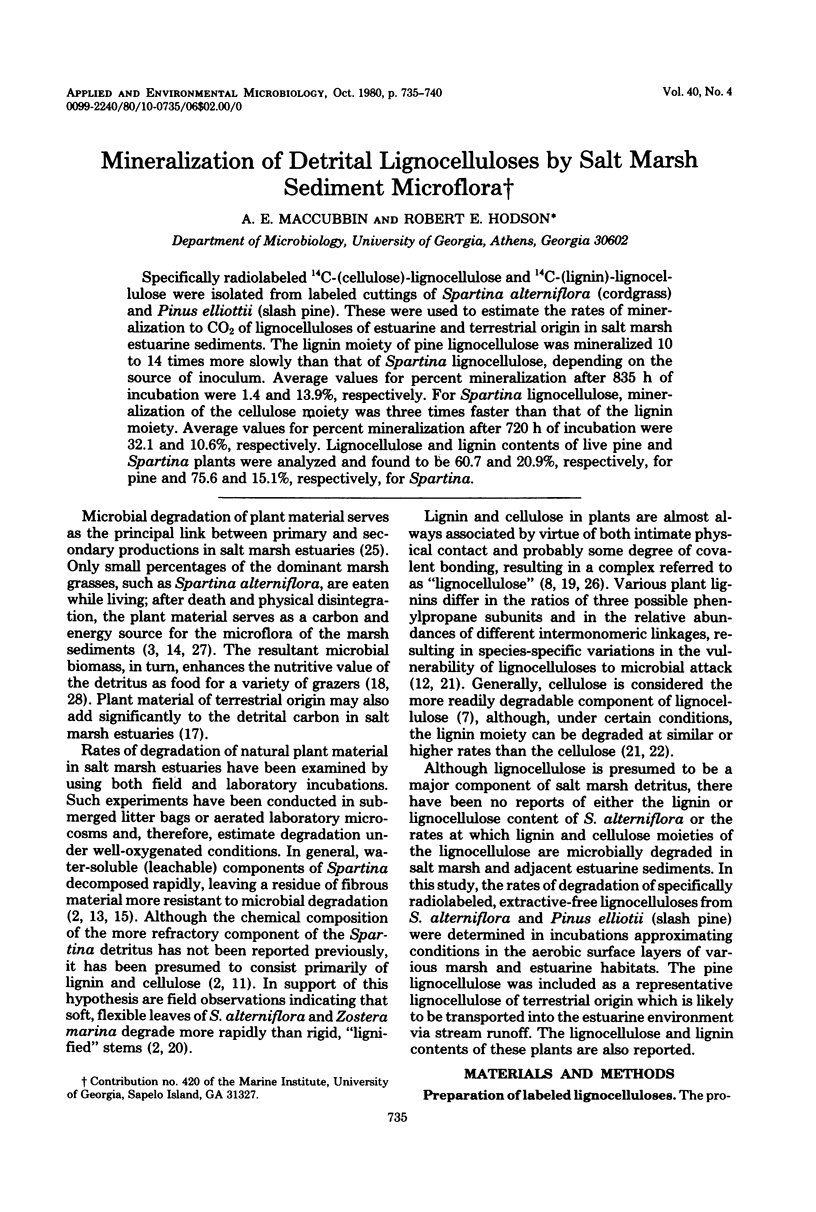
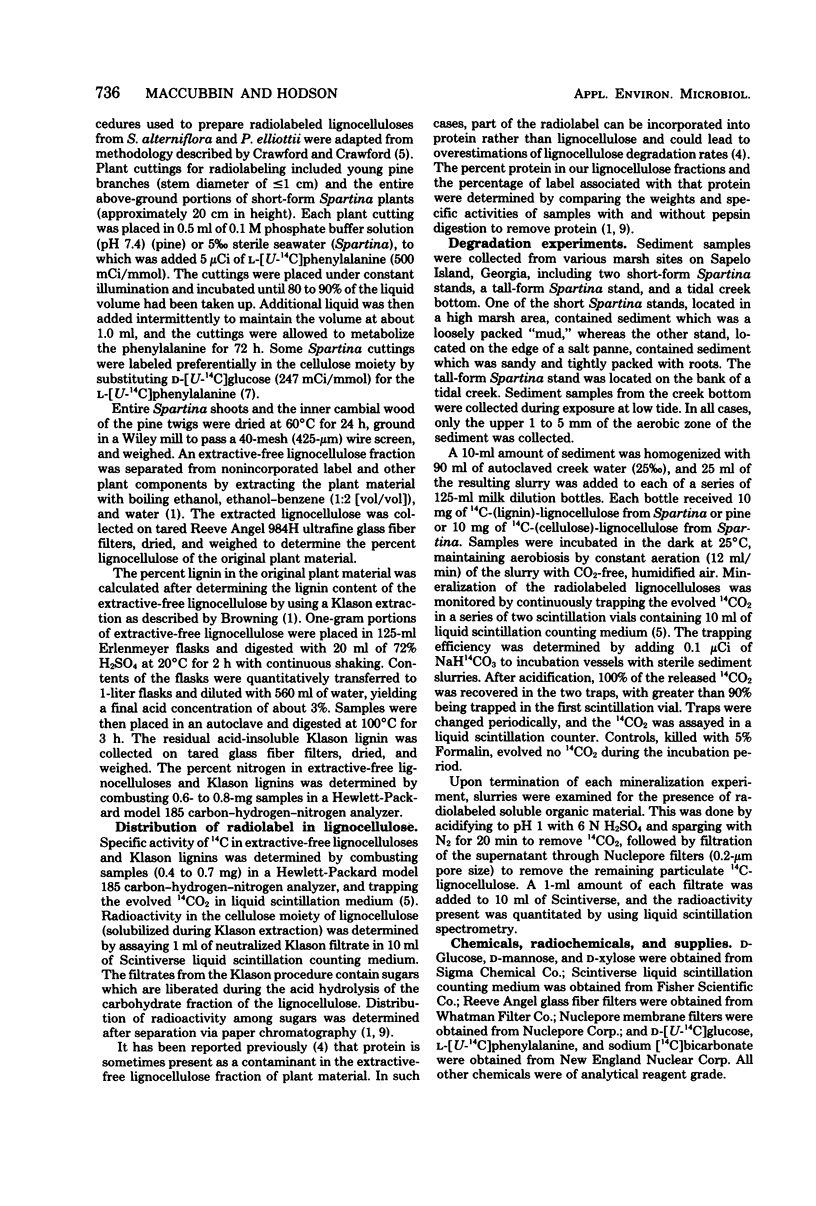
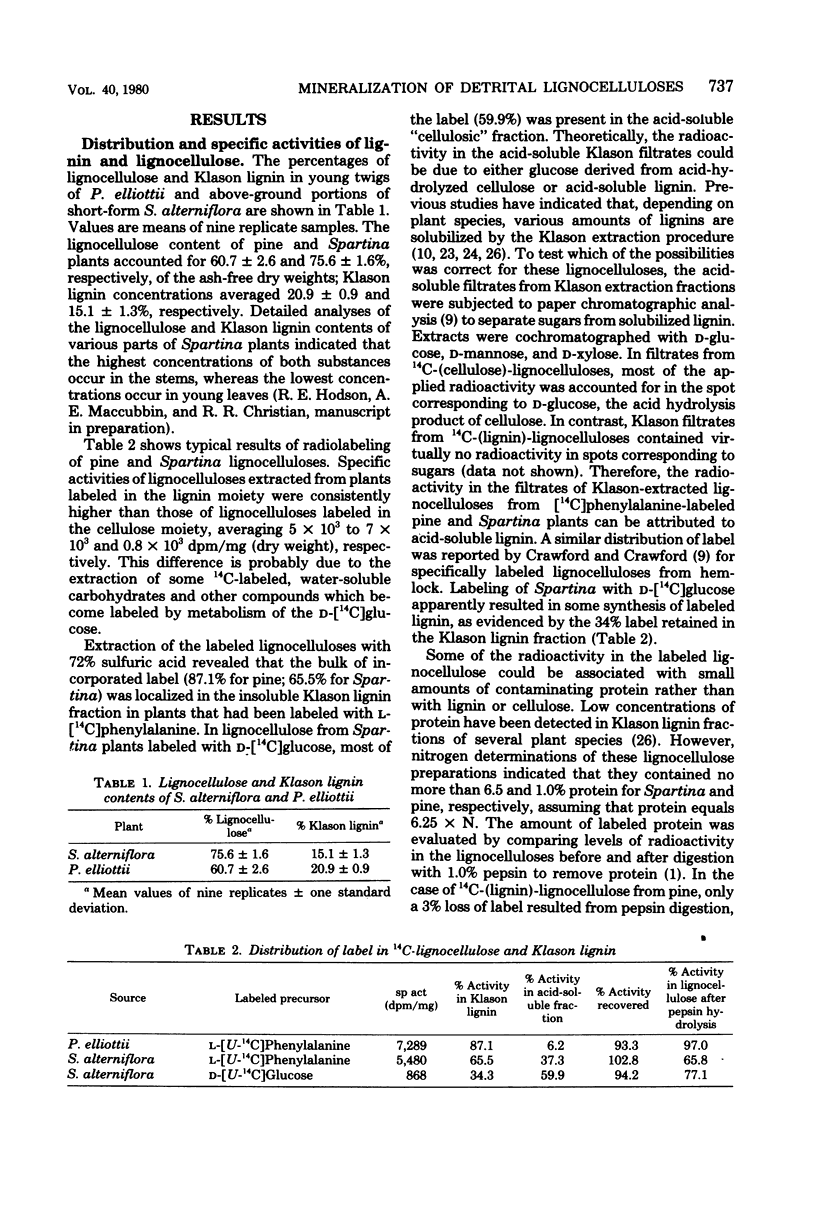
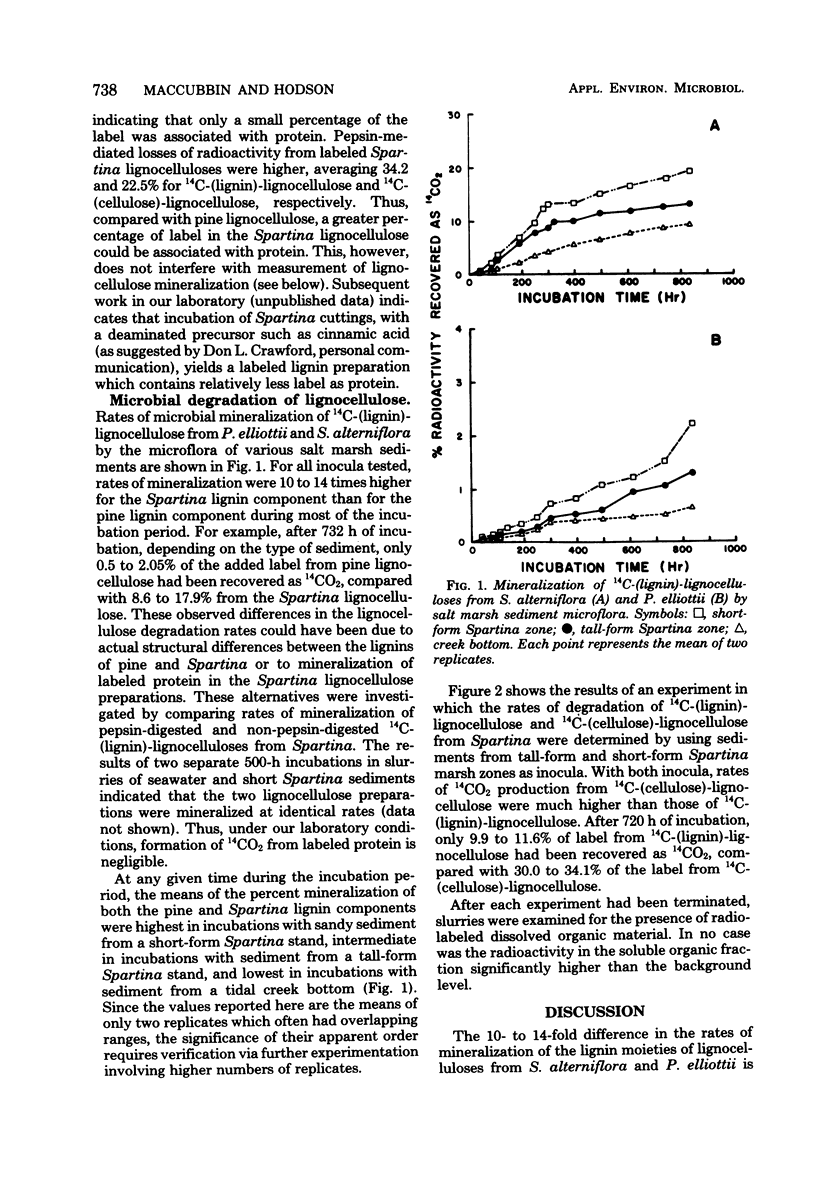
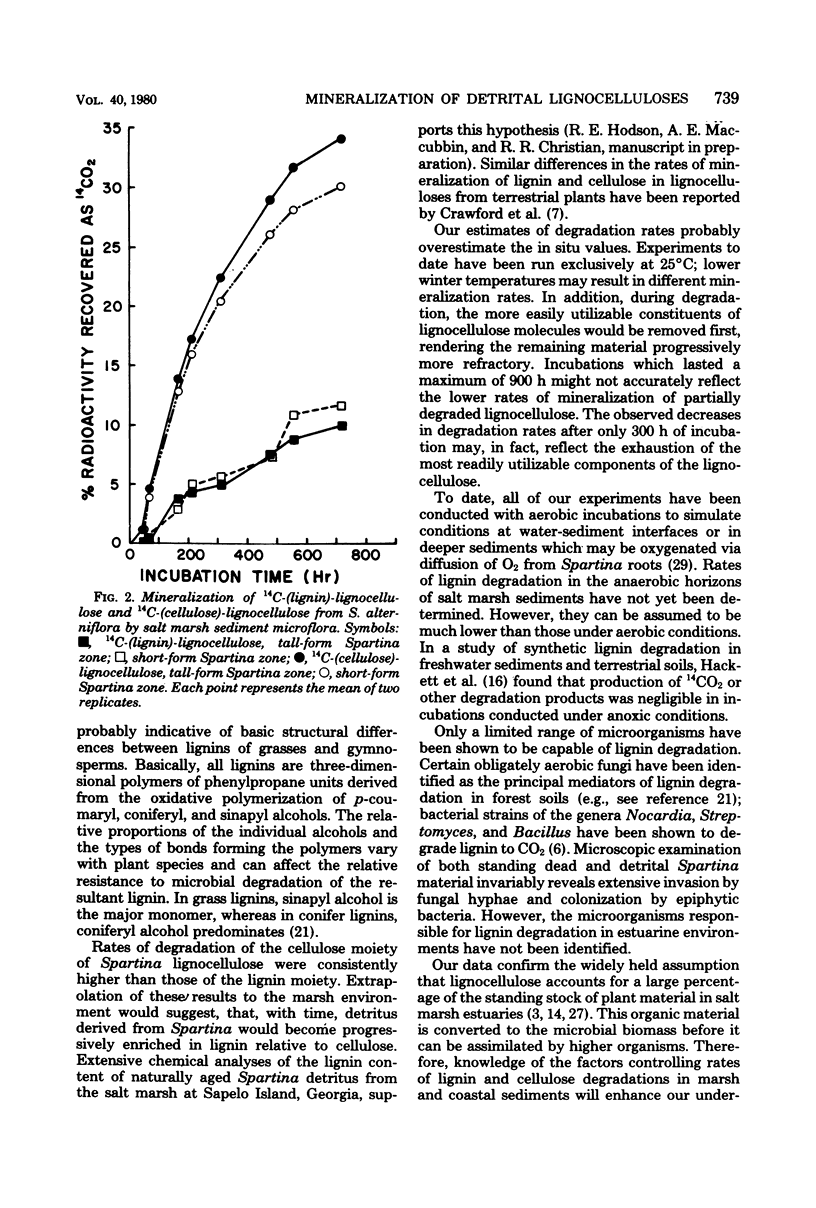
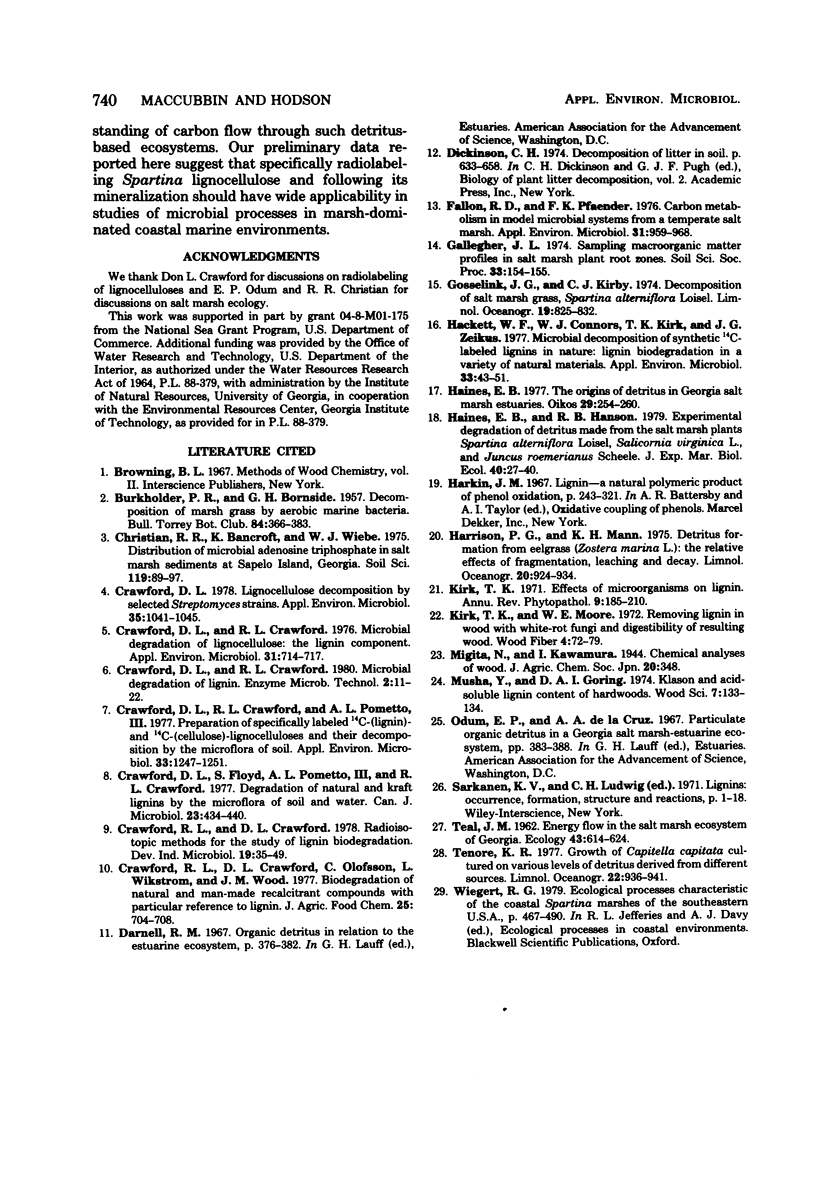
Selected References
These references are in PubMed. This may not be the complete list of references from this article.
- Crawford D. L., Crawford R. L. Microbial degradation of lignocellulose: the lignin component. Appl Environ Microbiol. 1976 May;31(5):714–717. doi: 10.1128/aem.31.5.714-717.1976. [DOI] [PMC free article] [PubMed] [Google Scholar]
- Crawford D. L., Crawford R. L., Pometto A. L. Preparation of specifically labeled C-(lignin)- and C-(cellulose)-lignocelluloses and their decomposition by the microflora of soil. Appl Environ Microbiol. 1977 Jun;33(6):1247–1251. doi: 10.1128/aem.33.6.1247-1251.1977. [DOI] [PMC free article] [PubMed] [Google Scholar]
- Crawford D. L., Floyd S., Pometto A. L., 3rd, Crawford R. L. Degradation of natural and Kraft lignins by the microflora of soil and water. Can J Microbiol. 1977 Apr;23(4):434–440. doi: 10.1139/m77-064. [DOI] [PubMed] [Google Scholar]
- Crawford D. L. Lignocellulose decomposition by selected streptomyces strains. Appl Environ Microbiol. 1978 Jun;35(6):1041–1045. doi: 10.1128/aem.35.6.1041-1045.1978. [DOI] [PMC free article] [PubMed] [Google Scholar]
- Crawford R. L., Crawford D. L., Olofsson C., Wikstrom L., Wood J. M. Biodegradation of natural and man-made recalcitrant compounds with particular reference to lignin. J Agric Food Chem. 1977 Jul-Aug;25(4):704–708. doi: 10.1021/jf60212a018. [DOI] [PubMed] [Google Scholar]
- Fallon R. D., Pfaender F. K. Carbon metabolism in model microbial systems from a temperate salt marsh. Appl Environ Microbiol. 1976 Jun;31(6):959–968. doi: 10.1128/aem.31.6.959-968.1976. [DOI] [PMC free article] [PubMed] [Google Scholar]
- Hackett W. F., Connors W. J., Kirk T. K., Zeikus J. G. Microbial decomposition of synthetic C-labeled lignins in nature: lignin biodegradation in a variety of natural materials. Appl Environ Microbiol. 1977 Jan;33(1):43–51. doi: 10.1128/aem.33.1.43-51.1977. [DOI] [PMC free article] [PubMed] [Google Scholar]


